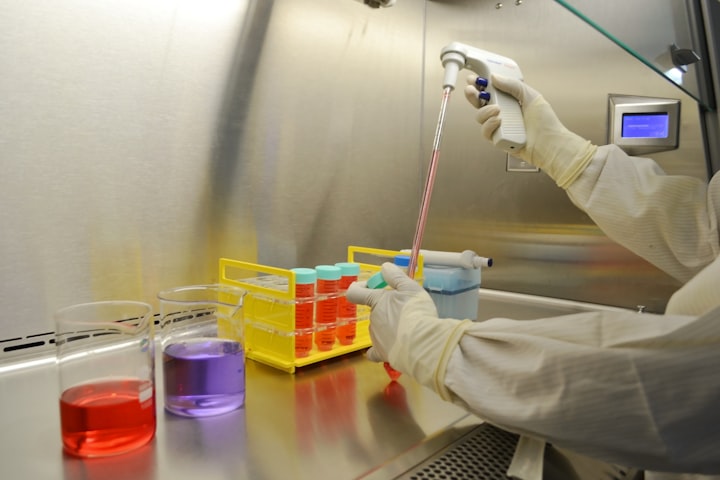To what extent is the use of animals in scientific research acceptable?
To what extent is the use of animals in scientific research acceptable?

An estimated 1.7-2.2 million vertebrates are used for research, training, and testing each year, with less than 1 percent of people killed for food.9 About 85 percent of these rodents and mice were bred for research purposes. The largest proportion (50%) of animals (37%) are mice used in basic research to improve the health and protection of various species, as well as research used such as the development of antibiotics and vaccines. Another important area is drug research and vaccine and other biological research and cancer research (30%), and animals are used for other purposes such as basic research and diagnosis.
Animal use has increased over the past decade as genetically modified breeding has led to an increase in the number of mice by more than 23% per year due to not only an increase in the number of genetically modified animals but also the need for large numbers of genetically modified rats. accepted women lie.
The discomfort felt by a large section of society about the use of animals in research should encourage researchers to ensure that research is conducted humanely and responsibly. There is a serious debate in the scientific community about the value of information obtained from many animals, the importance of biodiversity, and whether there should be any doubt about the scientific effectiveness of animal research results in humans. Many researchers feel that they are at odds with one another when dealing with animals, but they have supported their research to preserve and protect the animals.
While it is not possible to completely exclude animals from scientific processes, there is an urgent need to develop alternatives to effective and accurate research and to adopt stricter rules for the protection of animals used in research. The development of alternative approaches from the scientific community and anti-protection groups requires the continued use of animals during the development and validation phase of research.
Animal scientists argue that there are other ways to achieve their scientific goals and that the pain and discomfort caused by animals outweigh the potential benefits of their research. Animal testing in medical research and cosmetic testing cannot be excused for the reason that the animals in the evolutionary chart are inferior to humans and in many ways similar to humans. However, despite all these behavioral problems, 89% of scientists supported animal inclusion in the 2005 study, conducting various studies and studies to make new discoveries and innovations that benefit the entire animal community.
Scientific research has shown that animals have similar physical structures to us. Animal species can help researchers experiment with new therapies that would otherwise be impossible for humans. This work means that we can learn a trade without doing animal research, which is not possible with human volunteers, so many laboratory animals are used.
This allows researchers to develop countless species of mammals that would be difficult to study in mice. Not only do we benefit from research and testing as humans, but hundreds of herbal remedies are also used in veterinary clinics to enable animals to live longer and healthier lives.
It is unreasonable to expect that false claims that microdosing will replace animal use in scientific research or that animal studies will be required to confirm and support the inclusion of animals in medical research (Frame, Nottingham, UK: Frame, 2005) will fail.
Proponents of animal research say that it has allowed for the development of several life-saving therapies, that some research methods could be supported by biodiversity, and that strict rules prevent animal abuse on board. Many understand and accept that animal research is needed to address the most important health, environmental, and economic problems of our time, but the fact that so many animals are being used to further these problems seems pointless and cruel. Opponents of animal labor claim that animal experiments are cruel and inhumane and that researchers have alternative methods to change animal behavior, that animals are different from humans, and that animal experiments lead to unimportant results.
Although no responsible scientist would want to use animals or unnecessarily harm them, it can be avoided if scientists accept and control the use of animals in research. Finally, I would like to accept all animal science experiments, but if we have no other option, governments should introduce laws and regulations to protect the ownership of the animals used in that study.
For example, mice are infected with many of the same cancers that afflict humans, which is one of the reasons why they are animals used in cancer research. When animals are used in laboratory research to test product toxicity, they perform painful and sometimes fatal tests. Animals are also exposed to severe pain, suffering, and death when used in laboratory cosmetic tests and animal research should be stopped to prevent the health of animals that will be damaged in the future.
According to Understanding Animal Research, a nonprofit organization in the UK, 94% of drugs that have passed animal testing in human clinical trials have failed. However, if animals are used in the study and if people can give their consent for use in the experiments this is an effective option if the need arises.
The committee accepted the argument that the use of animal testing benefits human health and concluded that animal testing should be validated on a case-by-case basis.





Comments
There are no comments for this story
Be the first to respond and start the conversation.